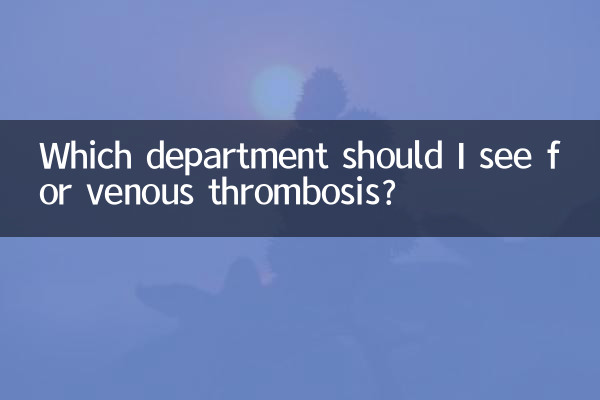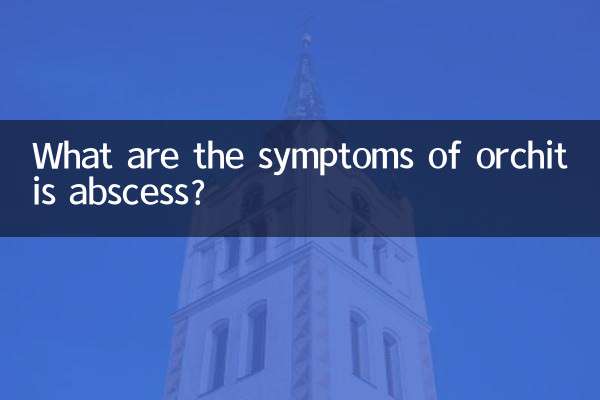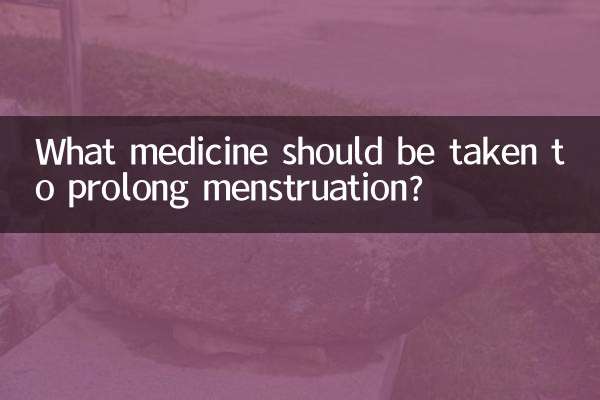Which department should I see for venous thrombosis?
Venous thrombosis is a common vascular disease that can be life-threatening in severe cases. Many patients often don’t know which department they should call after developing symptoms. This article will combine the hot topics and hot content on the Internet in the past 10 days to answer the question of department selection for venous thrombosis in detail, and provide relevant data and analysis.
1. Basic concepts of venous thrombosis

Venous thrombosis refers to the formation of blood clots in the veins, causing blood vessel obstruction. According to the location of thrombosis, it can be divided into deep vein thrombosis (DVT) and pulmonary embolism (PE). Deep vein thrombosis mostly occurs in the lower limbs, while pulmonary embolism is a serious consequence of the clot breaking off and blocking the pulmonary artery.
2. Departments for treatment of venous thrombosis
The treatment of venous thrombosis requires a department selection based on the patient's specific conditions. The following are common medical departments and their scope of application:
| Department name | Scope of application | Typical symptoms |
|---|---|---|
| Vascular Surgery | Deep vein thrombosis, varicose veins of lower limbs | Swelling, pain, and redness of the skin in the lower limbs |
| Cardiovascular Medicine | Pulmonary embolism, thrombophlebitis | Chest pain, difficulty breathing, hemoptysis |
| emergency department | Acute pulmonary embolism, sudden lower limb swelling | Sudden chest pain, fainting, shortness of breath |
| Hematology | Coagulopathy, hereditary thrombophilia | Recurrent blood clots, family history |
3. Treatment process for venous thrombosis
1.Initial diagnosis:When patients develop symptoms of suspected venous thrombosis, they should seek medical treatment as soon as possible. The doctor will make a preliminary judgment based on symptoms and medical history.
2.Check items:Common examinations include ultrasonography, D-dimer testing, CT pulmonary angiography, etc.
3.Treatment options:Depending on the type and severity of the blood clot, your doctor will develop a personalized treatment plan, including anticoagulation, thrombolysis, or surgery.
4. Hot content related to venous thrombosis in the past 10 days across the entire network
The following are the hot topics and data on venous thrombosis on the Internet in the past 10 days:
| hot topics | Number of discussions (times) | main focus |
|---|---|---|
| Early symptoms of venous thrombosis | 15,200 | How to recognize the early signs of venous thrombosis |
| Long-haul flights and venous thrombosis | 8,700 | How sitting for long periods of time increases the risk of blood clots |
| Anticoagulant drug selection | 12,500 | Warfarin vs new oral anticoagulants |
| Prevention measures for venous thrombosis | 9,800 | Prevention methods in daily life |
5. How to prevent venous thrombosis
1.Keep active:Avoid sitting or standing for long periods of time and move your lower limbs regularly.
2.Eat healthy:Eat more fiber-rich foods and reduce high-fat meals.
3.Comfortable to wear:Avoid wearing tight clothing, especially on the lower body.
4.Attention high-risk groups:People with a family history of illness or who are bedridden for a long time should have regular check-ups.
6. Summary
Venous thrombosis is a disease that requires timely treatment, and choosing the appropriate department for treatment is crucial for treatment. Vascular surgery, cardiovascular medicine, emergency department, and hematology are common departments visited. By understanding the symptoms and preventive measures of venous thrombosis, you can effectively reduce your risk. If you or someone around you develops relevant symptoms, please seek medical treatment promptly.
This article combines hot topics and data from the entire Internet in the past 10 days to provide you with a comprehensive guide to treating venous thrombosis. Hopefully this information will help you better understand and cope with venous thrombosis.

check the details

check the details